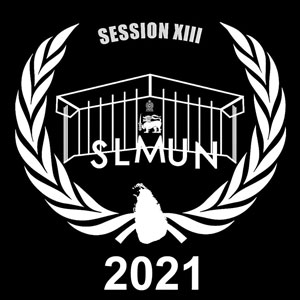The Arctic Fires: What will be its impact on the global climate?
View(s):The Arctic Circle blazed with wildfires in the summer of 2020, destroying tundra and developing Siberian cities in smoke and bringing about the second most extraordinary fire season in a row. By the time the fire season died down at the end of November 2020, the blazes had emitted a record 244 megatons of carbon dioxide which is 35% more than the previous year. Scientists say that one culprit of this could be peatlands that are burning as the top of the world melts.
 Peatlands are carbon-rich soils that have accumulate while waterlogged plants slowly decay over thousands of years. They are the most carbon-rich ecosystems on Earth, and a peatland in the North carries about ten times as much carbon as a boreal forest. Thus when they burn, it releases its ancient carbon to the atmosphere, adding to the greenhouse gases that result in climate change.
Peatlands are carbon-rich soils that have accumulate while waterlogged plants slowly decay over thousands of years. They are the most carbon-rich ecosystems on Earth, and a peatland in the North carries about ten times as much carbon as a boreal forest. Thus when they burn, it releases its ancient carbon to the atmosphere, adding to the greenhouse gases that result in climate change.
Nearly half the world’s peatland-stored carbon lies, along the Arctic Circle. The problem with this is that frozen carbon-rich soils thaws as the planet warms, making them susceptible to wildfires. Therefore, as more carbon is released from peatlands, there is an increase in global warming, which thaws more peat. This leads to an increase in the number of wildfires. A study published last month shows that northern peatlands could eventually become a net source of carbon, thereby accelerating climate change.
According to researchers, the fire season in the Arctic in 2020 kicked off in May – which is unusually early – and there were fires blazing north of Siberia’s tree line, which normally wouldn’t happen until around July. One reason for this is that temperatures in winter and spring were warmer than usual, priming the landscape to burn. It is also possible that peat fires had been smoldering beneath the ice and snow all winter, and then emerged, zombie-like, in the spring as the snow melted. Scientists have shown that this kind of low-temperature, flameless combustion can burn in peat and other organic matter, for months or even years.
Because of the early start, individual Arctic wildfires have been burning for longer durations of time, and it was stated that the fires were starting much farther north than they used to — in landscapes that were believed to be fire-resistant rather than fire-prone. An assessment is being conducted by researchers to see just how severe the season of Arctic Wildfires has been. The Russian Wildfires Remote Monitoring System catalogued 18,591 separate fires in Russia’s two
Eastern-most districts, with most of the burning happening in permafrost zones, where the ground is normally frozen all year-round.
To estimate the carbon dioxide emissions, scientists with the European Commission’s Copernicus Atmosphere Monitoring Service (CAMS) used satellites to study the wildfires locations and intensity, and then calculated how much fuel each had probably burnt. However, it is believed that even this method is likely to be an underestimate according to scientists at the European Centre for Medium-Range Weather Forecasts (ECMWF) in Reading, UK, who was involved in the analysis.
Moreover, a study conducted in August 2020 found that there are nearly four million square kilometers of peatlands in northern latitudes. “More than what was previously thought is frozen and shallow — and therefore vulnerable to thawing and drying out”, says Gustaf Hugelius, a permafrost scientist at Stockholm University who led the investigation. He and his colleagues also found that although peatlands have been helping to cool the climate for thousands of years, by accumulating carbon , they will probably become a net source of carbon being released into the atmosphere by the end of the century.
Session XIV of SLMUN will be held on the 11th and 12th of September 2021 at the Bandaranaike Memorial International Conference Hall (BMICH), Colombo, Sri Lanka. For further details, please contact us via:
Email –
cda@slmun.org /
pr@slmun.org
Telephone –
+94 71 801 3722 / +94 71 444 9694
- Ashan Chandrasena
(News and Media Team
– SLMUN 2021)



